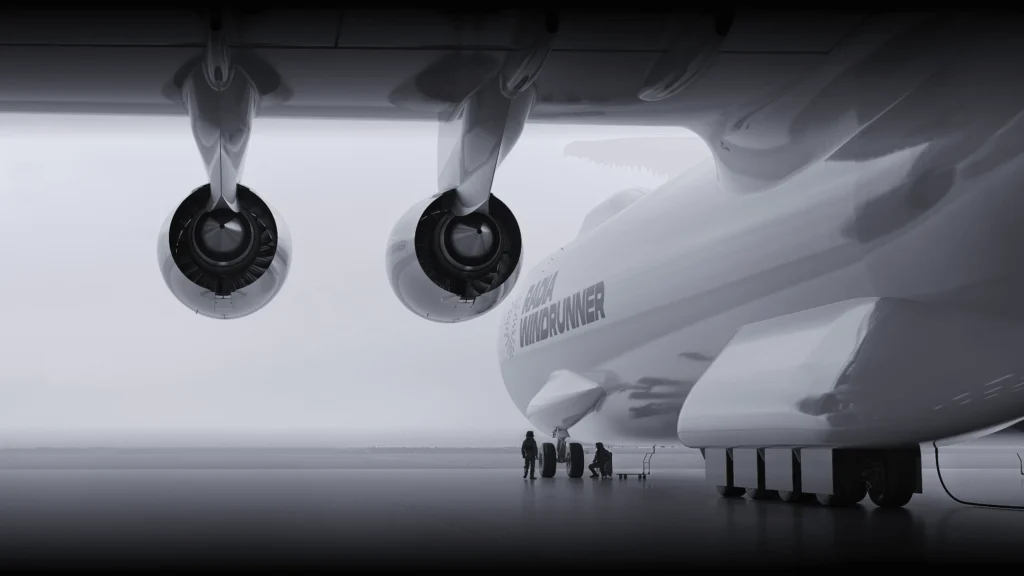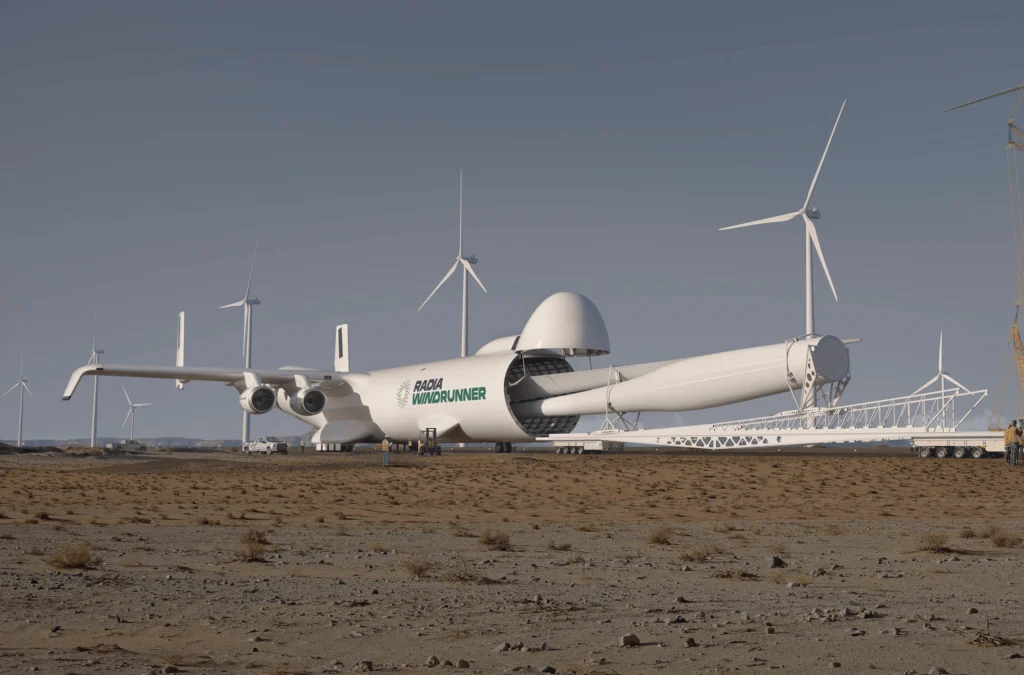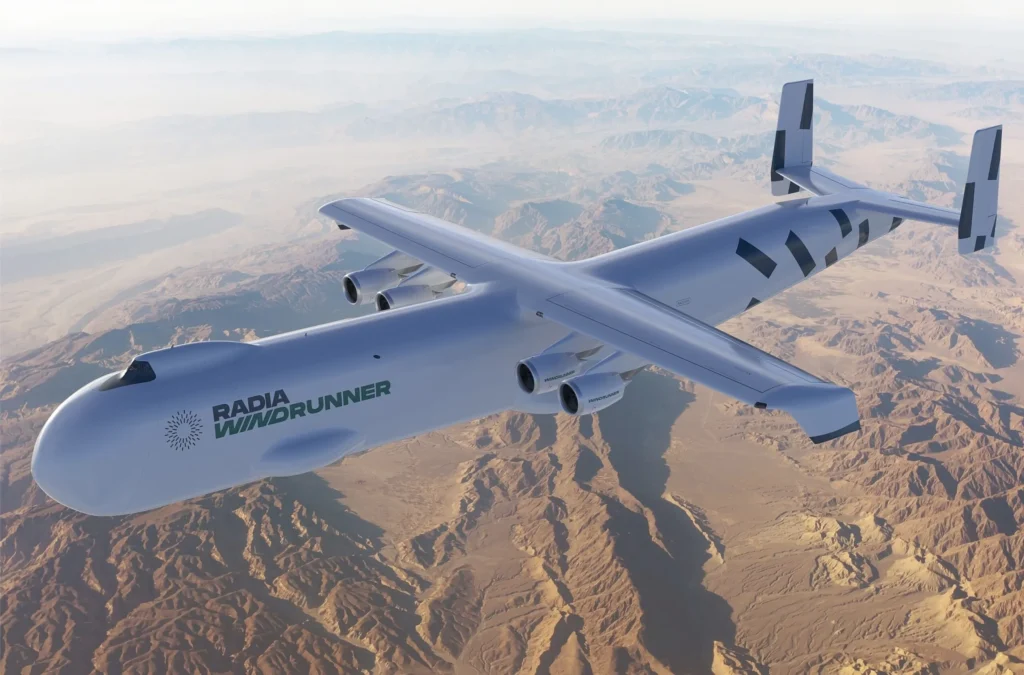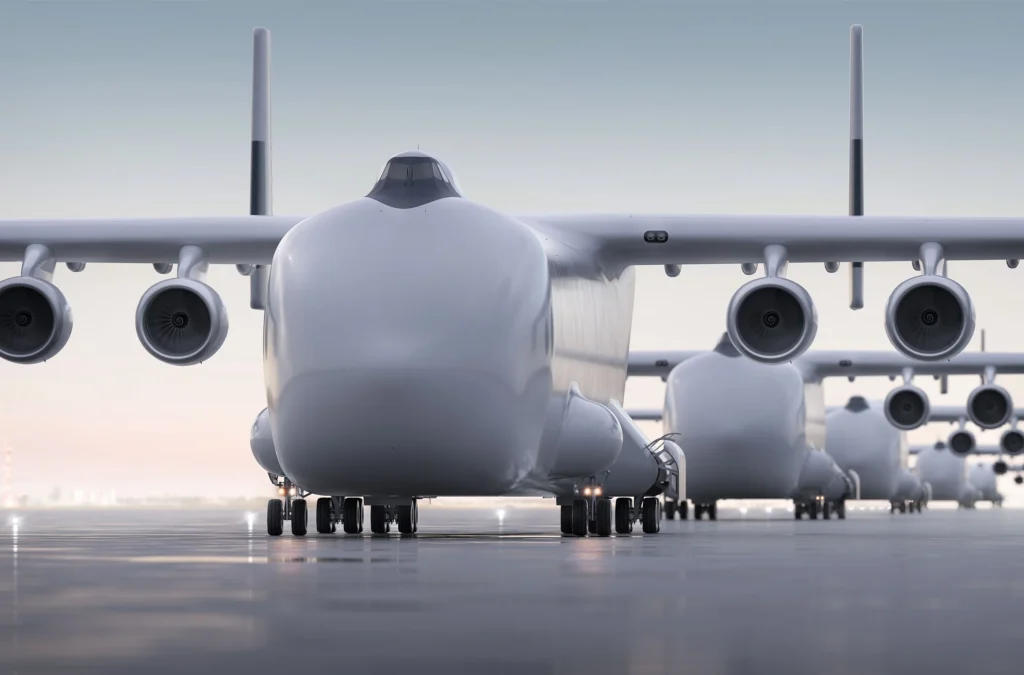
PARIS- Radia Corporation unveiled the WindRunner aircraft at the Paris Air Show on June 16, marking the first public appearance of what aviation experts now recognise as the world’s largest aircraft by length and volume.
The Paris-Le Bourget Airport (LBG) hosted this year’s premier aviation event, where the WindRunner commanded unprecedented attention among industry professionals.
 Radia WindRunner at Paris Air Show; Photo- Radia
Radia WindRunner at Paris Air Show; Photo- RadiaLargest Aircraft in the World: WindRunner Debut
The WindRunner measures 356 feet from nose to tail, significantly exceeding the legendary Antonov An-225 Mriya’s 276-foot length.
Engineers designed the aircraft with a cargo bay capacity of 7,700 cubic meters, substantially larger than the Airbus BelugaXL’s 2,209 cubic meters.
This massive cargo space positions the WindRunner as a game-changing solution for oversized freight transportation.
Radia Corporation, established nine years ago by former MIT and Boeing professionals, originally conceived the WindRunner specifically for transporting 344-foot wind turbine blades.
The aviation industry quickly recognised broader applications, and manufacturers now consider the aircraft for satellite deployment and armoured vehicle transport missions, provided cargo weight remains under 72.6 metric tons.
 Radia WindRunner; Photo- Radia
Radia WindRunner; Photo- RadiaTechnical Specs
The WindRunner incorporates 4 engines that enable operations at altitudes reaching 41,000 feet with a maximum range of 1,240 miles.
The aircraft features a 261-foot wingspan and achieves speeds up to Mach 0.6 (460 mph).
Despite limited public technical details, industry observers expect Radia to reveal engine specifications and additional performance metrics during the air show.
International Partnership
Radia assembled 5 specialised companies to develop distinct aircraft components.
Spain’s Aciturri Aeronáutica manufactures the composite tail structure, while Brazil’s Akaer Engenharia handles pressurised cabin systems and integration.
Wisconsin-based Astronautics Corporation develops avionics systems, the UK’s Element Materials Technology manages fuel system integration, and California’s Ingenium Technologies creates the high-lift control system.
 Photo- Radia
Photo- RadiaOperational Capabilities
The WindRunner operates from unpaved runways measuring 1,800 meters, requiring no specialised ground infrastructure.
This capability stems from its original wind turbine transportation mission in remote locations. Military and disaster response organisations recognise these operational advantages for accessing challenging environments.
Military Applications
USTRANSCOM signed an agreement with Radia in May to evaluate the WindRunner’s military transportation potential.
The partnership examines operational effectiveness for Department of Defence logistics requirements, cargo handling procedures, and airfield compatibility across various mission profiles. This collaboration opens pathways for military applications beyond commercial use.
 Photo- Radia
Photo- RadiaIndustry Impact
The WindRunner’s debut signals a transformation in heavy cargo transportation. Aviation manufacturers study their design innovations while logistics companies evaluate operational possibilities.
The aircraft addresses growing demand for transporting increasingly large components across industries, including renewable energy, aerospace, and defence sectors.
The Paris Air Show presentation, while not featuring a fully operational aircraft, demonstrated Radia’s commitment to revolutionising cargo aviation through unprecedented size and capability integration.
Stay tuned with us. Further, follow us on social media for the latest updates.
Join us on Telegram Group for the Latest Aviation Updates. Subsequently, follow us on Google News
Top 10 Biggest Airplanes in the World (Updated)
The post Largest Aircraft in the World to Make its Debut at Paris Air Show 2025 appeared first on Aviation A2Z.
















![Karta Rodziny Mundurowej wkracza do Sejmu. Frysztak: nic nie stoi na przeszkodzie, by poszerzać grono uprawnionych [WYWIAD]](https://cdn.defence24.pl/2025/11/05/800x450px/0Yt7M1tzNYllfs9JACKlyaCkRybQn0D6JoxRbblo.voli.webp)

